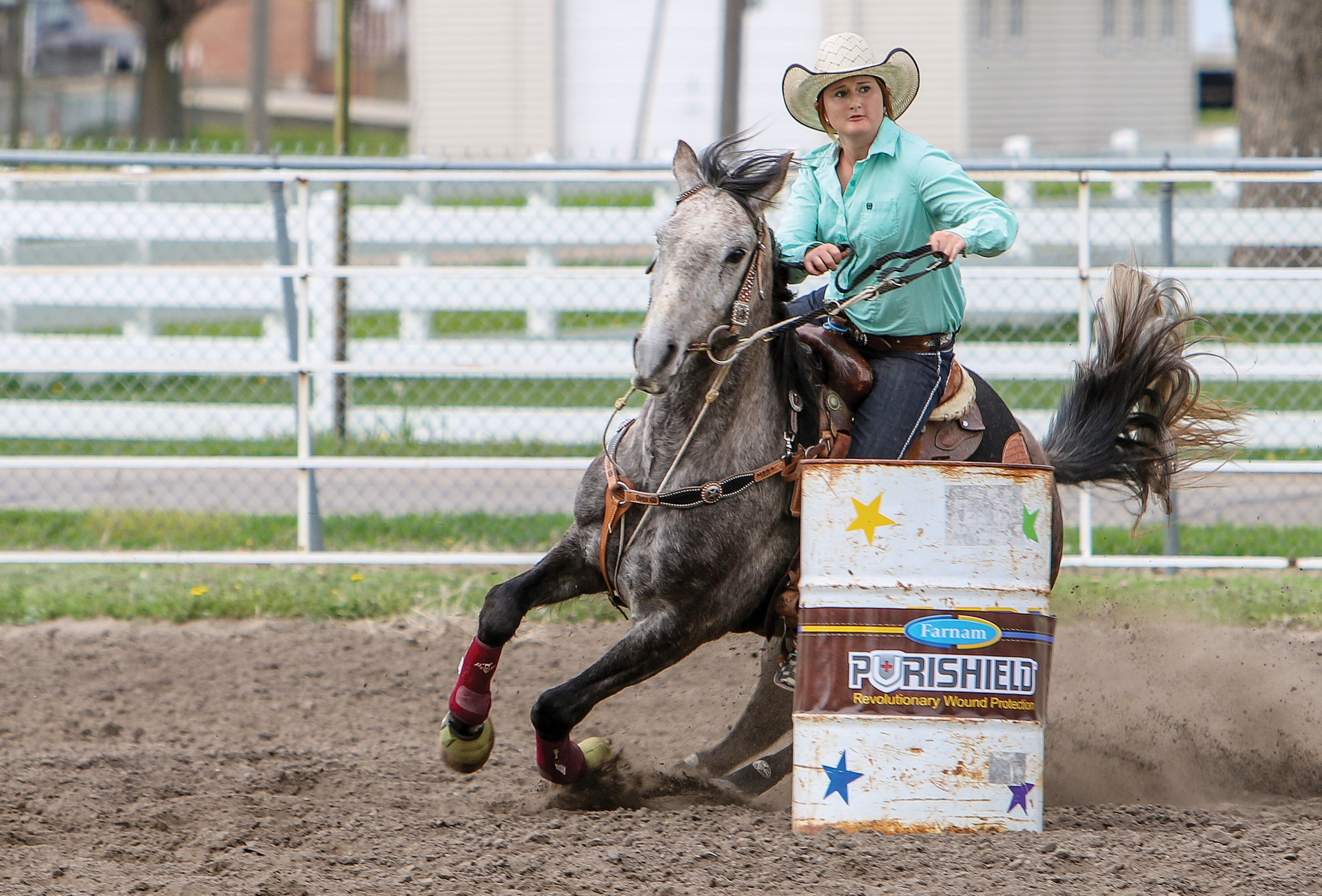When you’re racing against the clock it’s easy to forget where your horse’s body is and concentrate more on your time. But when you start to focus more on the clock than what your horse’s body is doing around the barrel, you’re going to get into trouble sooner or later.
[MORE BARREL RACING: Level Out]
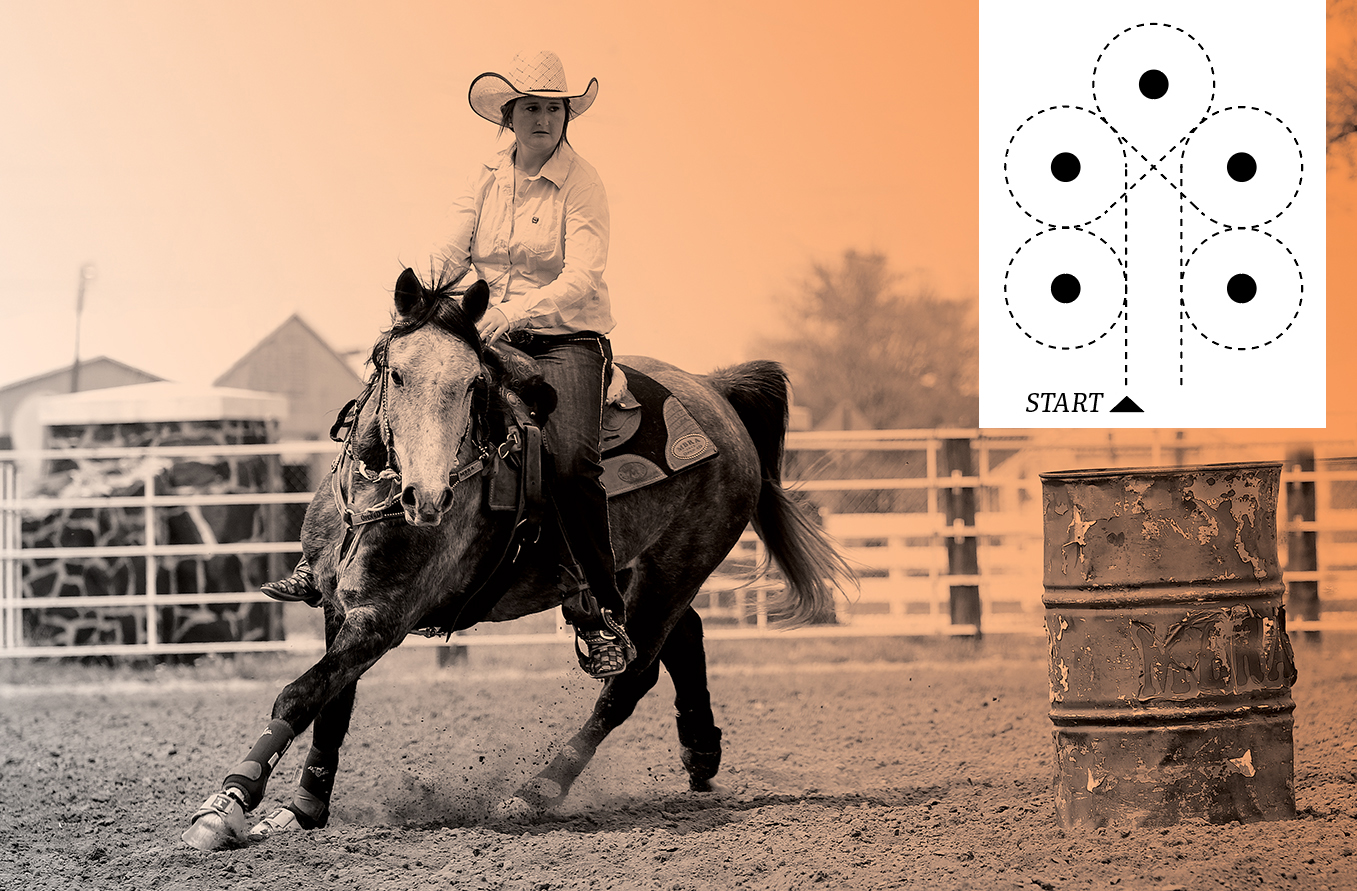
If you want to shave time off your run, you must ride your horse every step of the way and ensure that he’s standing up in his shoulders and driving underneath himself with his hindquarters. Here I’ll break down three major problems I see riders have with their horses when practicing barrels at my clinics and explain how my five-barrel exercise can help break those habits and improve your run. I use this drill with all of my horses—both green and seasoned—and it’s something riders of all skill levels can add into their regular riding routines.
Three Problems
1. Disengaged Hindquarters
The first problem I see involves the horse trying to crossfire or disengage his hind end as he goes around the barrel. Not only does this keep your horse from staying balanced as you make the turn, it also forces your horse to put his body in an awkward position where his hindquarters swing away from the barrel and his shoulders go toward it. It’s going to up your chances of hitting a barrel, and it’s definitely going to slow down your overall time.
Use this exercise to collect your horse, drive his hind end forward, and keep his shoulder lifted through the turn. It’s much harder for your horse to pop out of lead or swing his hind end to the outside if he can’t hollow out his back and disengage his hindquarters.
2. Anticipation
This is something I see mostly with seasoned horses, although it can happen with green horses, as well. Once your horse learns the pattern, it’s easy to anticipate the approach of the barrel and turn too early or anticipate your leaving point—causing you to hit a barrel.
Adding two additional barrels to your pattern allows a change up from your regular three-barrel routine, and it also gives you the chance to work on your horse’s body and where he is in relation to the barrels without him knowing where he’s going next or trying to do it without you.
3. Boredom
If you only run three barrels in the same direction each time, your horse is going to get bored. If you want your horse to continue to love running, you must be creative with how you practice barrel work at home and limit the amount of times you ride your horse on a regular pattern.
While this exercise involves barrels, it’s much different than practicing a run. It allows you to go around five different barrels at both a trot and lope, not necessarily in the same order you would during a run. And by setting up the additional barrels in your arena and approaching them at a different angle each time, you’re giving his brain something new to think about so he continues enjoying running when it counts.
The Exercise
Start by setting up a normal barrel pattern. Add two barrels that are parallel to barrels one and two, as shown on page 51. If you’re working with a seasoned horse, limit your barrel work to one to two times a week to keep him fresh. If your horse is still learning, add this exercise into your routine three times a week until he starts to get comfortable. You can adjust the amount of times you practice this exercise as your horse’s confidence builds.
If at any point you run into a problem where your horse doesn’t want to do something willingly, try to fix it on the pattern first. If he continues to misbehave, take him off the pattern until you can fix the problem. You don’t want to cause a fight and create a negative experience with your horse when he’s working barrels. Just as you do, your horse has a more dominate side. Don’t be surprised if you have to work one direction more than the other.
The overall goal of this five-barrel exercise is to have fluid, forward-moving circles and only go around each barrel once at a trot and lope in both directions. This exercise can take weeks to master, especially if you’re fixing old habits. If you make progress with your horse, quit for the day and pick up where you left off the next time you’re working with him. Ride with two hands for the entirety of this exercise, and repeat each step as you feel necessary.
[READ: Barrel Racing Approach]
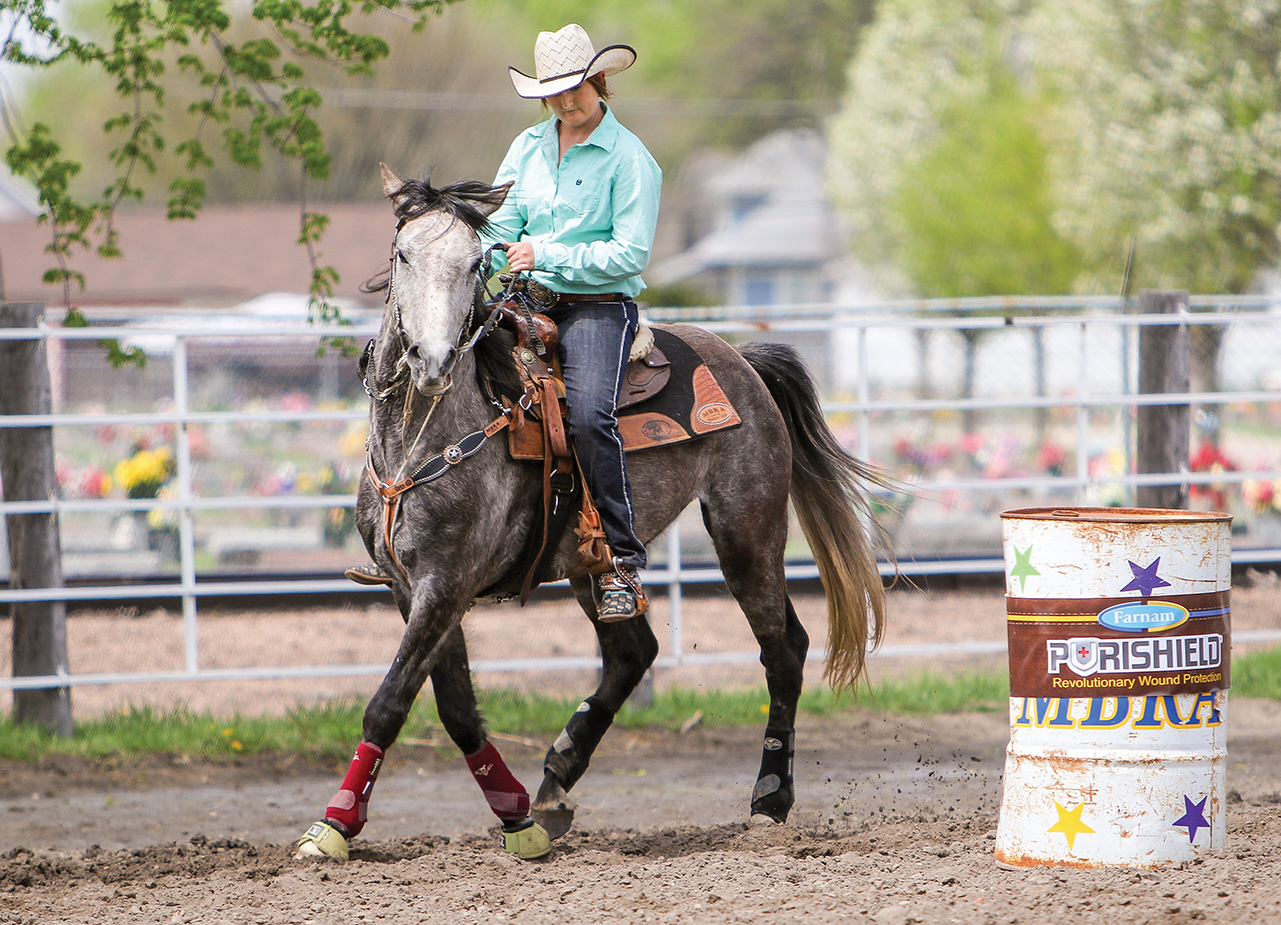
Nichole Chirico
Step 1: Supple Up
Before you begin working your horse through this exercise, take time to warm up and get your horse supple. This is something you should do with your horse at the start of every ride—regardless of if you’re practicing barrels or going for a quick ride. You can’t expect your horse to stay collected during a run if his body is stiff.
Simple warm-up exercises like bending your horse’s head side to side, counter-arc walk and trot circles, and sidepassing help your horse loosen up before you start working on drills.
Step 2: All-Left Trot Circles
Once your horse is supple, it’s time to put him on the pattern. You’ll begin your all-left trot circles from the inside of the barrel, about 6 feet away from it, and stay the same distance off it for the entirety of your circle. If your horse is green, give yourself 8 to 10 feet from the barrel and gradually move closer to the barrel with time.

Start with the barrels on the left side of the pattern and pick up a trot. With a seasoned barrel horse, he’s likely to drop his shoulder in at the start of the turn. As you approach the barrel, lift your inside (left) rein up to keep your horse’s nose slightly tilted to the inside and his shoulder up. Use your left leg to support his body to keep it from leaning into the barrel, and engage your right leg to keep your horse going forward.
If at first your horse wants to fight your cue and lean anyway, continue trotting the same circle until he wants to relax his neck and give to your rein pressure.
Don’t move onto the next barrel until you have an even circle and your horse stays relaxed and driving forward. Once you can accomplish that, you’ll do the same thing with the next four barrels, circling each one to the left.
[READ: Barrel Racing Tack Adjustment]
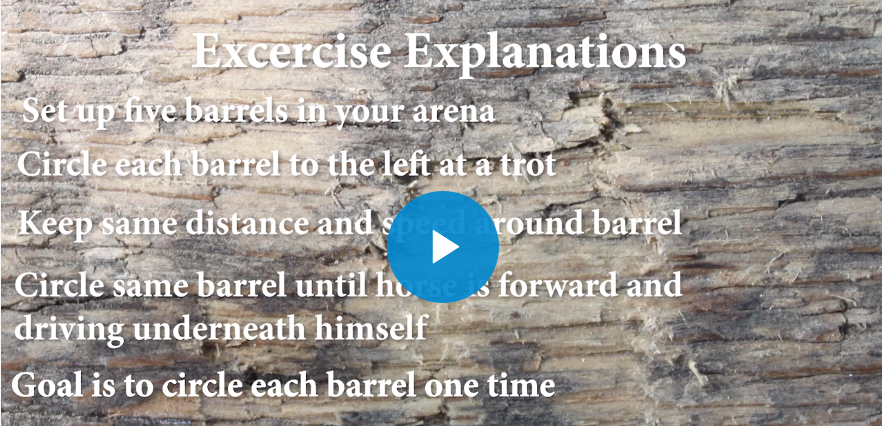
Step 3: All-Right Trot Circles
After you’ve gone through all of the barrels to the left and feel that you’ve made progress, you can start your all-right trot circles. Move over to the right side of your pattern and stay the same distance away from it as before.
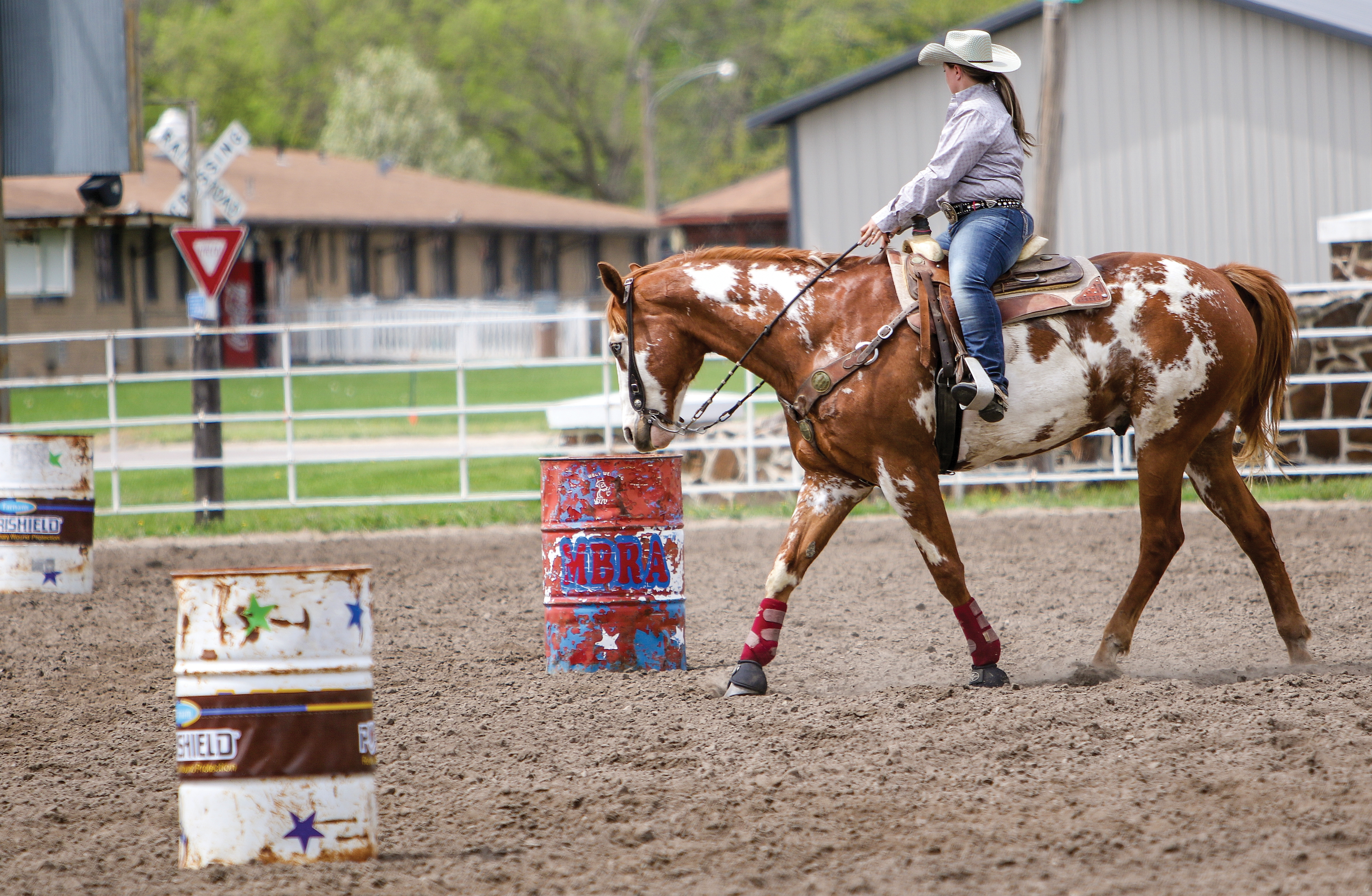
This time your horse is more likely to dive to the right. During your approach, pick up your right rein to stand his shoulder up and tilt his nose slightly to the inside. Use your right leg to block your horse from leaning to the inside, and use your outside (left) leg to continue driving him forward.
Once you’ve mastered the first barrel, you’ll move down the line and circle each remaining barrel to the right.
Step 4: Left-Lead Lope Circles
After you’ve mastered trot circles, you can up the level of difficulty and practice this exercise at a lope. For the left lope circles, you’ll go back to the left side of your barrel pattern (as you did with your left trot circles) and ask for your horse to pick up his left lead. This time you’ll want to stay about 8 feet off the barrel, or 10 to 12 feet if you’re riding a green horse.
The loping part of this drill is where your horse is most likely going to anticipate the pattern and try to dive into the barrel as you approach it, so it’s important that you focus on having your horse willingly wait on you as you go around the barrel. If at any point you struggle with loping this part of the drill, go back to the trot and build back up to this step.
To avoid having your horse dive in during the approach, lift your left rein up to elevate his shoulders, and use your left leg for additional support. Use your right leg to help your horse stay at a consistent speed and to keep his hips from swinging to the outside of the barrel. It’s important that you keep pushing your horse forward so he’s driving with his hind legs.
Continue loping this same circle until your horse wants to stay collected in the bridle, is driving forward with his hind end, and is consistent in speed and distance from the barrel. Once you’ve accomplished those objectives you can move on to the next barrels.
Step 5: Right-Lead Lope Circles
Go back to the right side of your barrel pattern (as you did with your right trot circles) and pick up your right lead. You’ll want to do exactly what you did during your left-lead circles to the right. Use your inside rein and inside leg to keep the shoulder lifted throughout the duration of your circle, and use your outside leg to help push your horse forward to keep him from hollowing out his back or crossfiring.
Once again, after you can complete a symmetrical circle where your horse keeps consistent speed and waits for you, you can continue on to the remaining barrels.
Step 6: Mix It Up
If you’re working with a horse that likes to anticipate the pattern or gets bored easily you can change up this exercise. For example, after you’re able to circle each barrel down the line on the left lead, change up the order in which you circle the barrels.
There are countless ways you can approach each barrel, creating a different pattern every time you ride through this drill. This keeps your horse from knowing the five-barrel pattern, and also keeps his mind fresh when you’re riding with barrels in the arena.
[READ: Do-It-Yourself Patterning]
